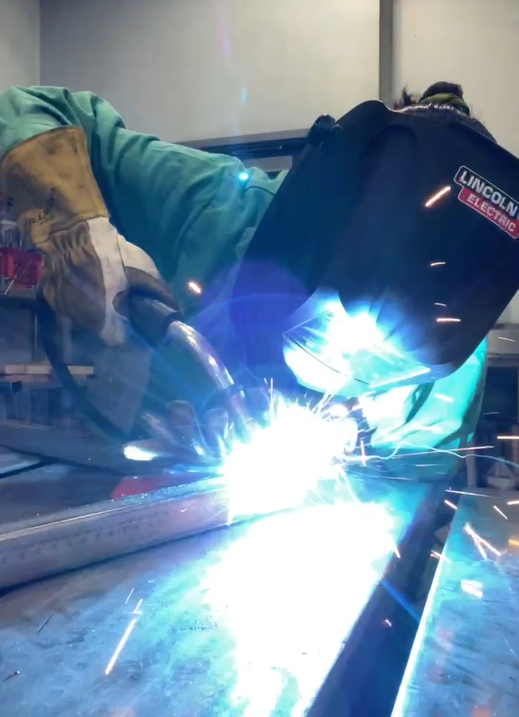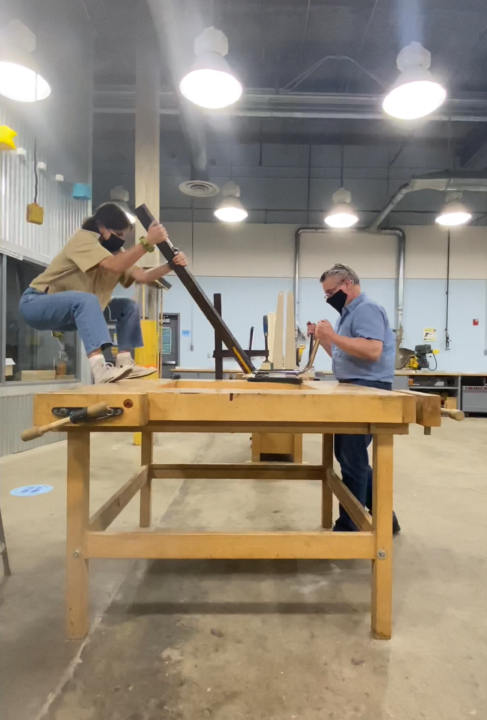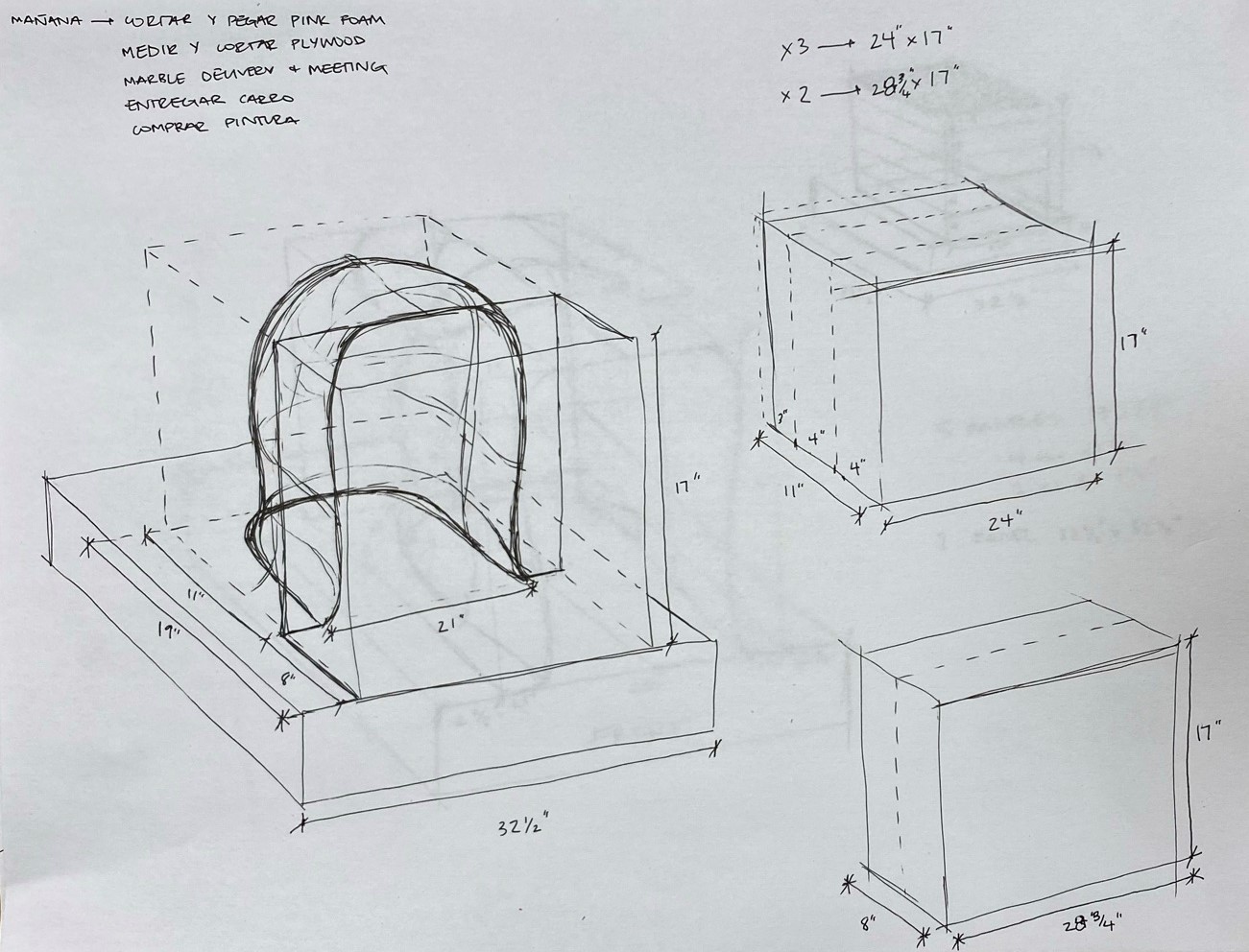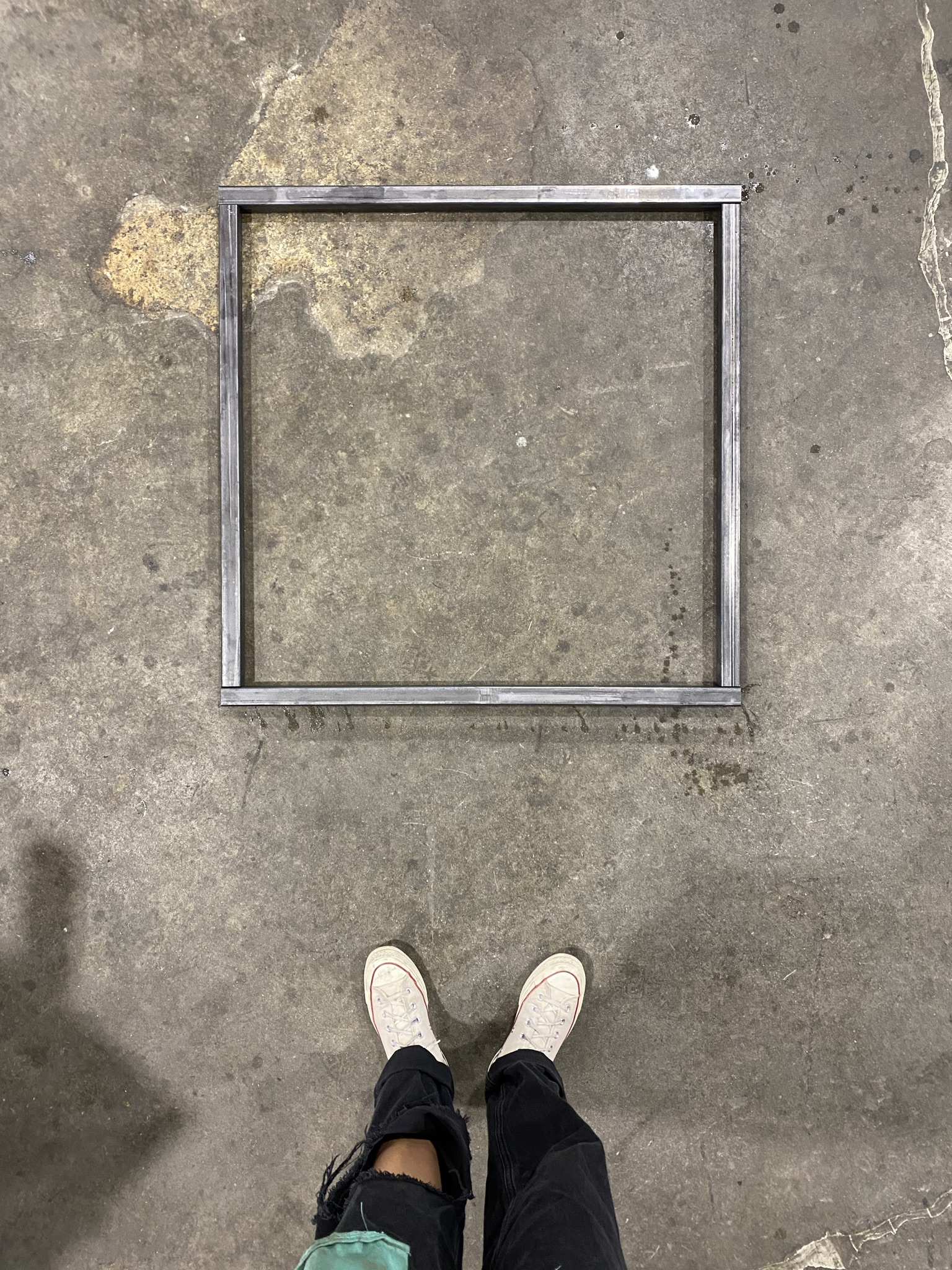Upside-RIGHT Chair
This
piece is a tug between the familiar and the unfamiliar presented in a peculiar
manner. What is unfamiliar about this furniture piece is how it is presented.
It consists of two components. The primary being an archetypal elementary
school desk chair, which is familiar to most of society. The elementary chair is
placed inside a translucent form and is positioned intentionally upside-down.
The idea was to cause confusion at first glance and urge the viewers to examine
the piece. Intrigued, the user approached the translucent form and investigated it. The goal was to incite enough curiosity that provoked them to touch the
form, eventually realizing the translucent form was made of ice. The exterior
object is more than a block of ice, but instead takes the form of a chair in and
of itself molded out of ice. Here, the viewer made the inference
that the raincoats given to them at the entrance of the exhibit allowed them to sit
without getting wet.
The
form and material of this piece are a tug between comfort and discomfort. The form
is ergonomic with about a 95 degree on the seat back and a contoured seat.
Based on form, the user should feel comfort. The discomfort derives from the
material. The coldness of the ice caused discomfort at first, but the
longer the user remained seated the most accustomed they got to the extreme
temperature. Similar to when jumping into a cold body of water and then becoming
used to the temperature to the point of feeling warmth and then cold only once leaving
the water. The ice component of the chair continuously melted throughout the
show as a result of room and body temperature. This object creates a contrast between the illusion of
warmth of the red lights and the reality of coldness from the ice.
The chair captured and suspended upside-down in
the ice is intended to represent furniture as all things functional, rational,
and tangible. The ice form is furniture represented as objects in their
emotional, intangible nature. The idea was that throughout the span of the
exhibition, the ice would melt, exposing the interior chair while the ice form
and everything it represents, vanishes. The same way as when one becomes
familiar and more accustomed to an object, the emotional component fades with
time. Here are process pictures of design development and execution. The process included experimental scale models, metalwork and MIG welding, wood work, mold making (with trial and error), foam shaping, metal tubing manipulation, freezing and heavy object transportation.
![]()
![]()
![]()
![]()
![]()
![]()

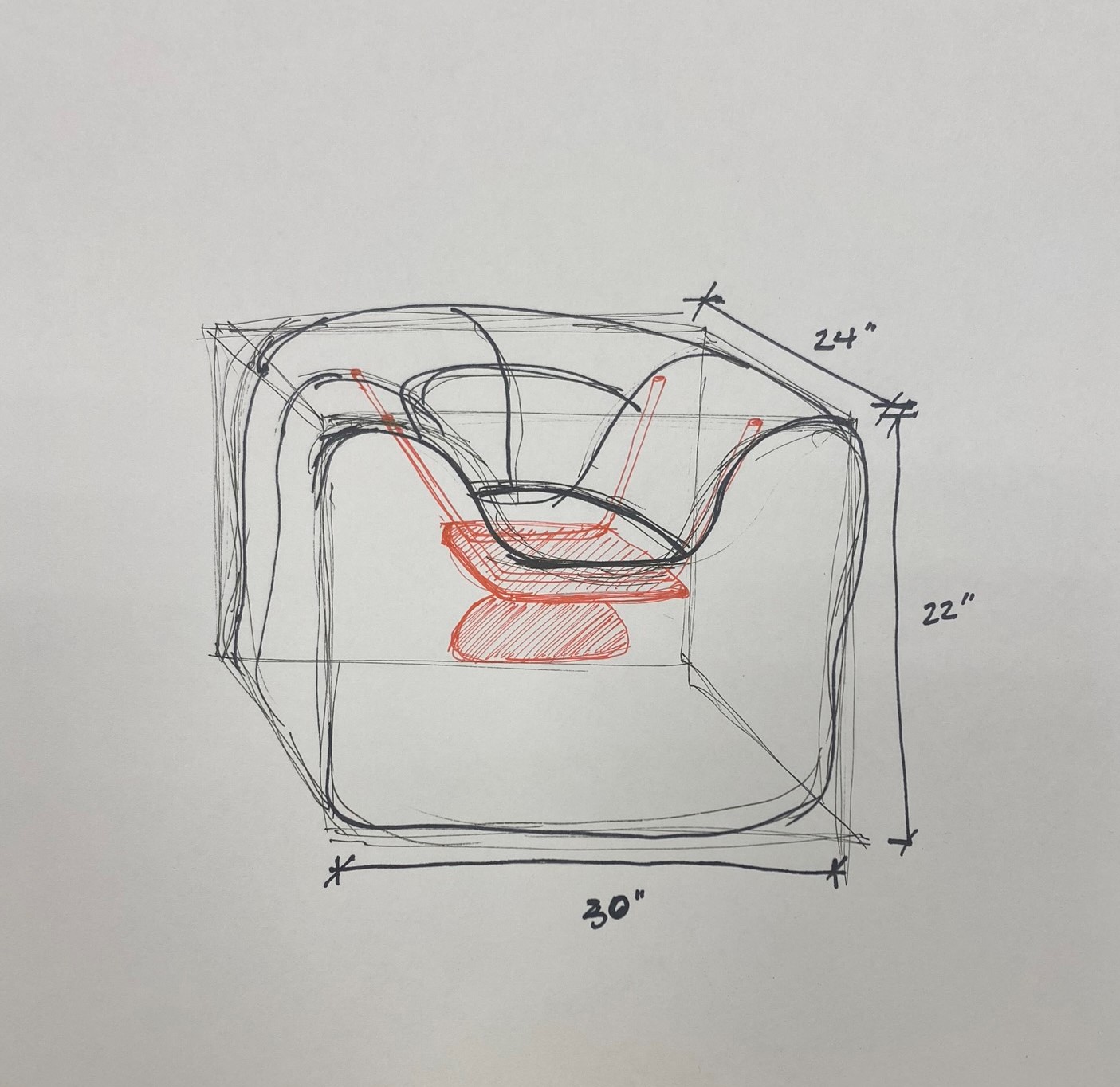
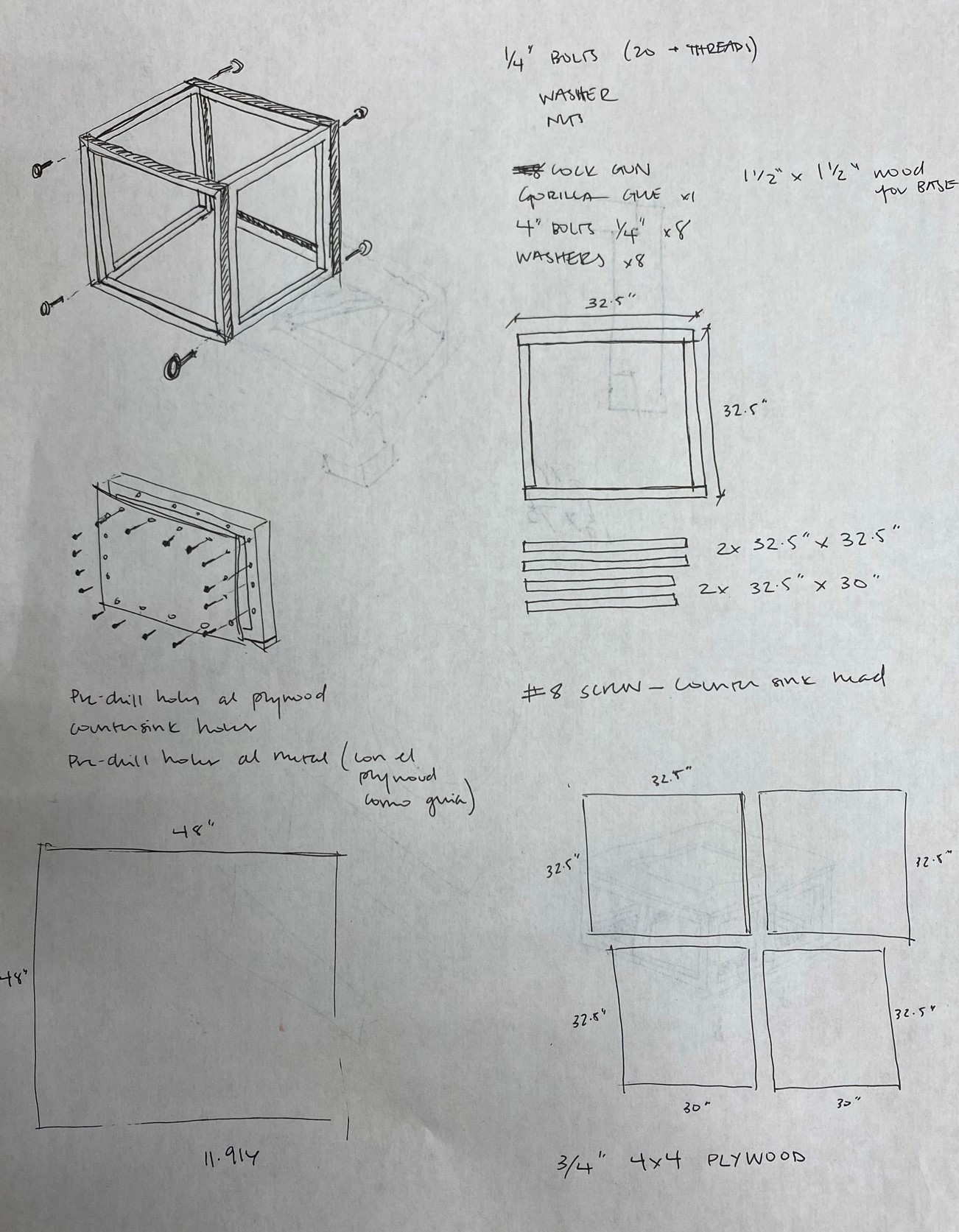
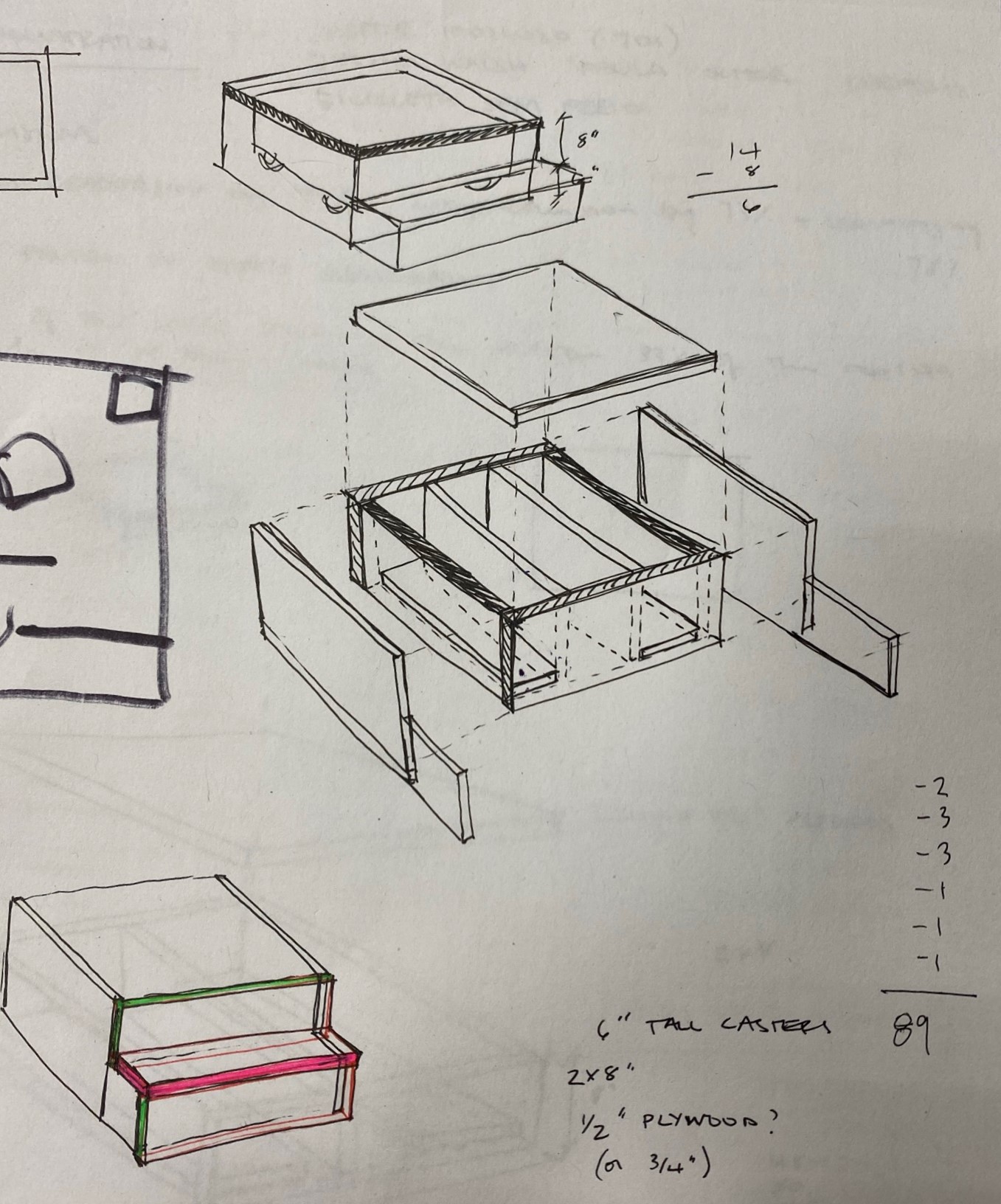

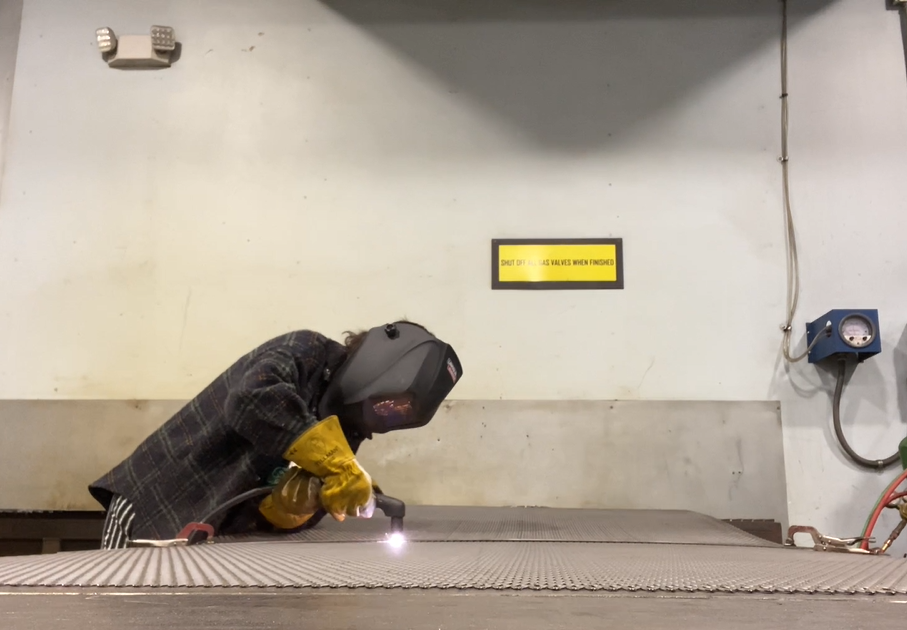

![]()
![]()
![]()
![]()
![]()
![]()
![]()
![]()
![]()
![]()
![]()
![]()
![]()
